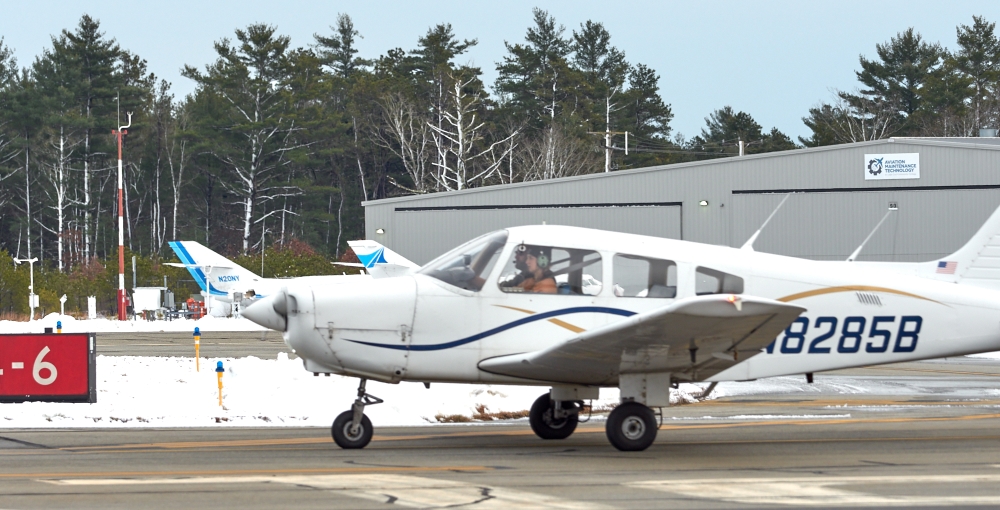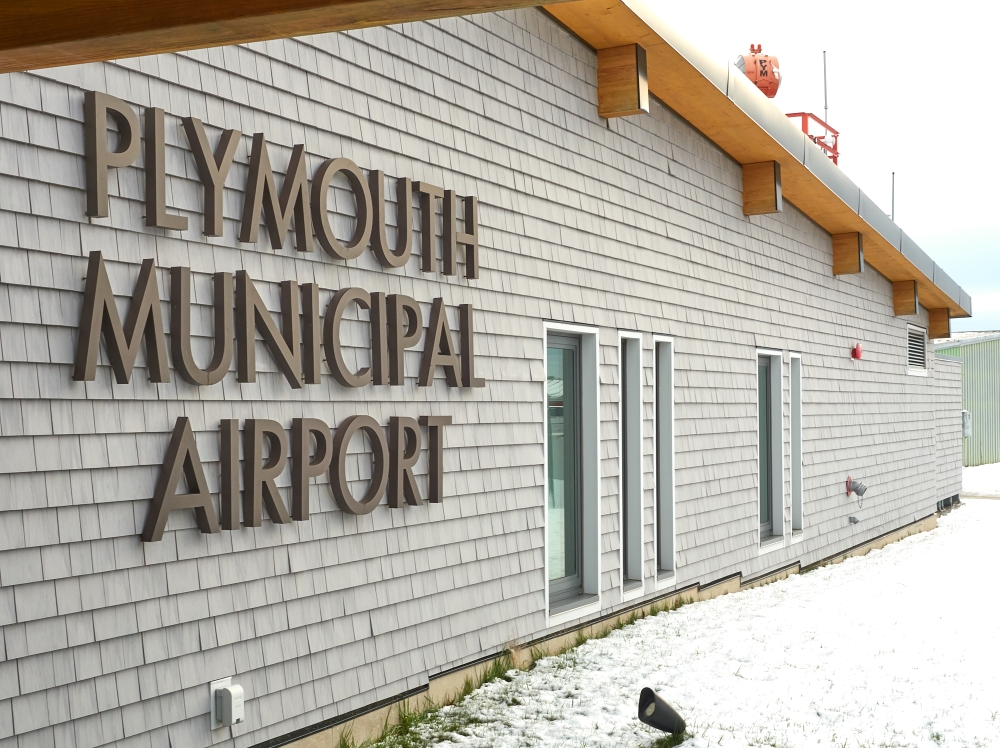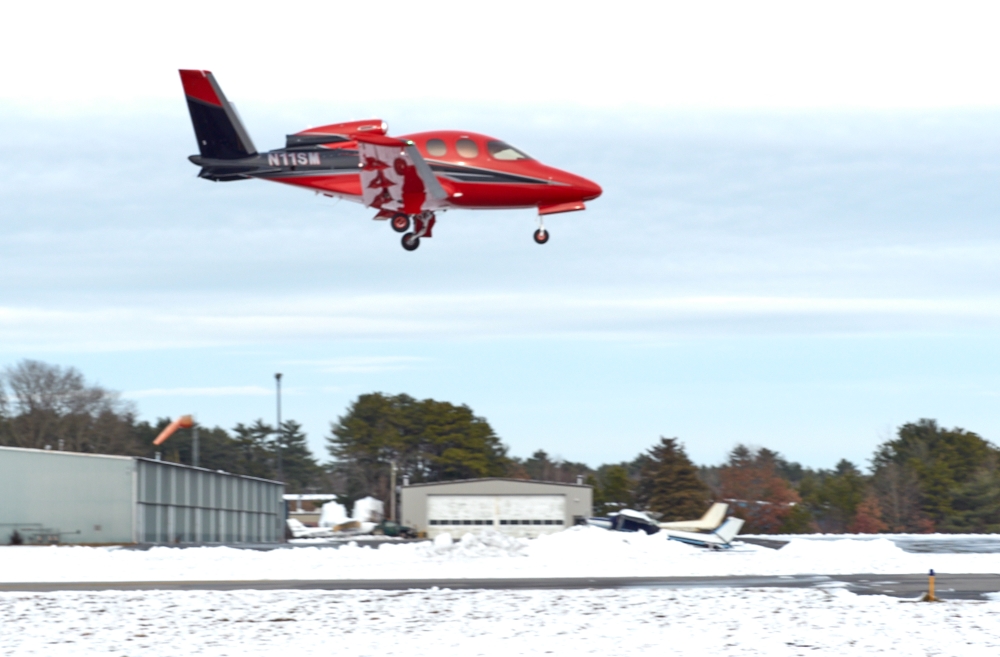Sharon Racette says she can taste fumes outside near Plymouth Airport’s main runway.
She wonders whether a planned extension of the runway will make it worse. The Plymouth Airport Commission wants to lengthen the runway by 351 feet to 5,001 feet, or nearly a mile long. Racette believes that could bring in more jets, more fumes, more noise, and more vibrations. It’s a concern shared by others who live in the vicinity.
But Ken Fosdick, chair of the Airport Commission, says the project won’t mean more or bigger planes. Lengthening the runway – called 6-24 – is necessary to comply with Federal Aviation Administration guidelines.
First, the FAA must approve the proposal, which also includes an expansion of taxiways and the capacity of the airport’s wastewater treatment plant.
The project is estimated to cost $7.6 million. The FAA will pay for 90 percent of it, or $6.84 million. The Massachusetts Department of Transportation Aeronautics Division will provide 5 percent, or $380,000. The remaining 5 percent, or$380,000, will be paid by the airport from its enterprise account. The expenditure must still be approved by Town Meeting in April.
Also, an environmental impact study is required as part of the process.
One potential concern is the impact on groundwater and on the Plymouth-Carver single-source aquifer, which encompasses 199 square miles across six municipalities. The U.S. Environmental Protection Agency has written that it has insufficient information to determine the impact of wastewater flow, stormwater discharges, and construction activity on groundwater and the aquifer and is requiring further study.
There is no definitive timeframe for that study, said Matthew Carillo, the airport manager. He said the airport is preparing a response to the EPA’s questions. Its consultant estimates that will be completed in the next two months.
There isn’t a definitive schedule for construction, said Fosdick. The funding is in the FAA’s fiscal year 2025 budget, which begins Oct. 1 of this year, but he said that could move by one or two years. A timeline submitted by the airport in its draft environmental impact report contemplates completion of most of the project by 2026.
Fosdick said the airport does not anticipate that more people or more jets will use the airport once the runway is extended.
The jet size that the airport is designed for, a Falcon 2000, needs 5,500 feet of runway to operate optimally, meaning it can land and take off with a full payload and have room to spare. The jets operate on the 4,650 feet of existing runway, but it is complicated, said Bob Frye, general manager of Pro Airways, the biggest jet operator at the airport.

The runways have two directions. They get their names from the degree headings on a 360-degree compass. Runway 6-24 can be used as runway 6, meaning planes head 60 degrees from the north or east-northeast, when landing or taking off. It can also be used in the opposite direction, as runway 24, meaning planes head 240 degrees from north or west-southwest.
When planes land or take off on Runway 6, they can use the full 4,650 feet, said Frye. But when they land in the other direction, using Runway 24, they have less room – just 4,300 feet. That’s because they must maintain a certain height over buildings on their approach, Frye explained. Adding 351 feet would give landing planes in that direction 4,651 feet to land.
The FAA imposes another limitation on planes when they land, Frye said. As a safety measure, pilots of charter companies such as Pro Airways can only plan on using 60 percent of an available runway to leave extra room for emergencies. So on a 5,000-foot runway, they could use 3,000 feet of runway as a minimum legal landing distance.
His company’s aircraft would have to land at a weight that allows them to land using 60 percent of 5,000 feet. That extra 40 percent of runway is built in as a safety allowance.
For takeoff on Runway 6, Frye said, one of Pro Airways’s aircraft is currently limited to a total weight of 25,000 pounds under given atmospheric conditions such as temperature and wind speed and direction.
Pro Airways operates four jets at Plymouth: a 12-passenger Falcon 900, a 10-passenger Falcon 2000, a 9-passenger Hawker 1000, and a 6-passenger Beechcraft Premier.

The airport is an economic driver for Plymouth. About 400 people work there, Fosdick said, with a payroll of $20 million.
Pro Airways, which has 28 employees, uses Plymouth as a base for its aircraft.
“All of our aircraft leave from here and at the end of the trip come back here,” Frye said.
But most of the company’s passengers aren’t from Plymouth.
“Our market is New York and Boston,” Frye said.
The Massachusetts State Police Air Wing, MedFlight, Cape Cod Community College’s Aviation Maintenance Technology Program, three flight schools, and several other air charter companies are also based at the local airport.
Plymouth is designated as a light general aviation airport, said Fosdick. It’s designed to accommodate aircraft such as the Falcons and Hawkers. That category is determined by the width of the landing gear of aircraft that use it, as well as the wingspan. The extension of the runway will not allow it to handle heavier aircraft, said Paul Worcester, one of the airport’s ommissioners.
“So those all play into how the airport is designed and what aircraft can then be used to operate at that airport,” he said. “Plymouth Airport is never going to lend itself to the kind of aircraft size growth that people are concerned about.”
A Plymouth Airport Advisory Group made up of Plymouth and Carver residents as well as users of the airport met, for several months before proposing the 351-foot runway extension.
A November public meeting for West Plymouth residents was poorly attended. Patty Kearn, who said she lives “in the flyover zone, constantly,” said the town should have done a better job of reaching out to people who could be affected.
“If there’s a lack of transparency and a lack of input by residents, I’m concerned about the town’s priorities and respect for people,” she said.
“They’re loud,” Kearn said of the jets. “You can tell when one’s getting ready to take off. You hear them and they can wake me up. More of that is not something that I would be happy with.”
The airport opened in 1934. It covers 758 acres, including the land where the 351-foot runway extension is to be built.
Racette lives a few thousand feet from the airport, on Federal Furnace Road.
“Most people moved here because they liked the peace,” Racette said.
She acknowledges that they chose to move near an airport, but points out that people chose to live near the Pilgrim nuclear power station, too.
“You can say those people should have known,” she said.
She said that until now, she had never worried about living near the airport.
“They keep saying safety, safety, safety for people in air, but what about safety for people on the ground?” she said during an interview at a nearby pizza parlor. “It’s a beautiful area and I’d like to see it stay that way.”
Fred Thys can be reached at fred@plymouthindependent.org.

